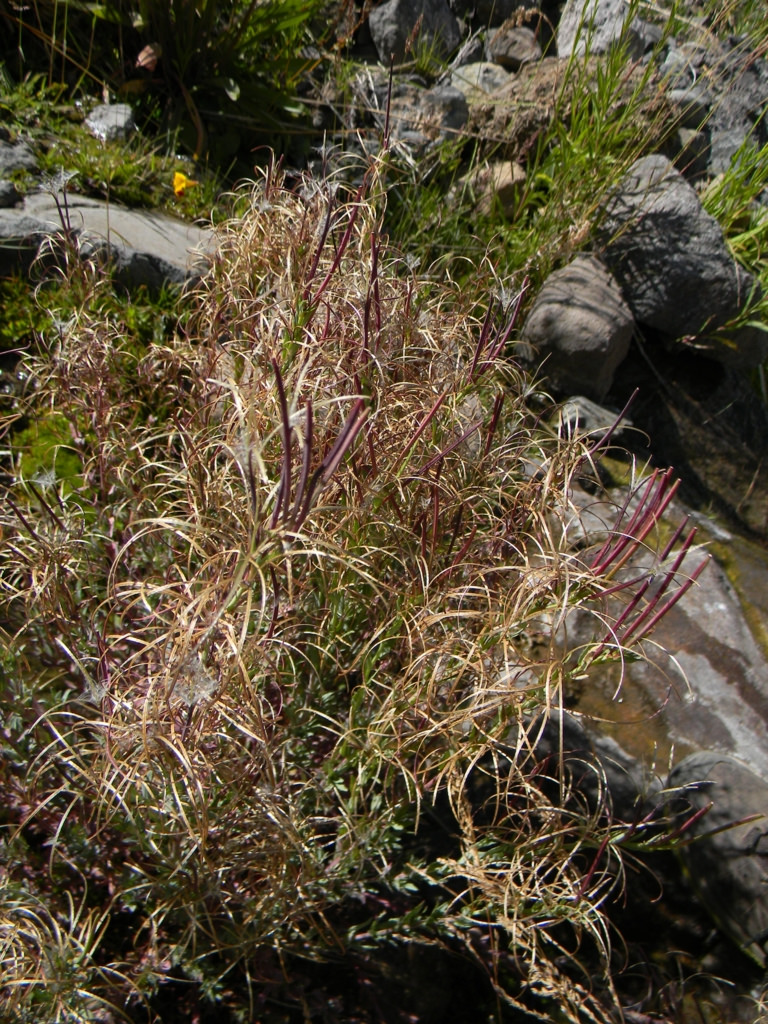Glaucous willowherb
(Epilobium glaucum)

Description
Epilobium glaucum, commonly known as the glaucous willowherb, is a species of flowering plant that belongs to the family Onagraceae. It is native to northern parts of North America, including Alaska, Canada, and Greenland, as well as some regions of Europe and Asia. The plant is characterized by its slender stem, delicate leaves, and showy pink flowers that bloom during the summer. Taxonomy and Nomenclature Epilobium glaucum was first described by the Swedish botanist Carl Linnaeus in 1753 in his book Species Plantarum. The genus name Epilobium comes from the Greek words epi, meaning "upon," and lobos, meaning "pod," referring to the position of the seed pods on the stem. The species name glaucum is derived from the Greek word glaukos, meaning "grayish-blue," referring to the color of the leaves. Description Epilobium glaucum is a herbaceous perennial that grows up to 80 cm tall. It has a slender stem that is usually reddish or green and is covered in fine, soft hairs. The leaves are alternate, lance-shaped, and up to 10 cm long. They are bluish-green in color and have a slightly waxy coating that gives them a glaucous appearance. The margins of the leaves are smooth, and the base tapers into a short petiole. The flowers of Epilobium glaucum are borne in clusters at the top of the stem. They are pink to purple in color, with four petals that are notched at the tips. The flowers are about 2 cm in diameter and have a sweet fragrance that attracts bees and other pollinators. The fruit is a narrow, cylindrical capsule that splits open to release numerous small seeds with long, white, silky hairs that aid in wind dispersal. Distribution and Habitat Epilobium glaucum is found in the northern hemisphere, primarily in the Arctic and subarctic regions. It is widely distributed across Alaska, Canada, and Greenland, as well as northern Europe and Asia. The plant grows in a variety of habitats, including tundra, wetlands, meadows, and open woodlands. It is particularly common in areas with moist soils and is often found near streams, rivers, and other bodies of water. Ecology and Conservation Epilobium glaucum plays an important role in the ecology of its habitat. The plant provides food and habitat for a variety of insects, including bees, butterflies, and moths, which are important pollinators for many other plant species. The seeds of the plant are also an important food source for birds and small mammals. While Epilobium glaucum is not currently considered endangered, its populations in some areas may be threatened by habitat loss and fragmentation due to human activities such as agriculture, logging, and development. Additionally, changes in climate and land use patterns may also have an impact on the distribution and abundance of the plant. Uses Epilobium glaucum has a number of traditional medicinal uses. The plant has been used by indigenous peoples in Alaska and Canada to treat a variety of ailments, including diarrhea, stomach cramps, and respiratory infections. The leaves and stems of the plant contain a number of biologically active compounds, including flavonoids, tannins, and saponins, that may have medicinal properties. In addition to its medicinal uses, Epilobium glaucum has some potential uses in horticulture. The plant's showy pink flowers and attractive foliage make it a popular choice for gardens and landscaping. It is also sometimes used as a groundcover or border plant.
Taxonomic tree:







